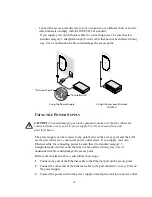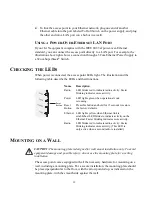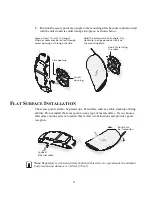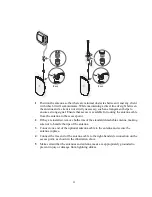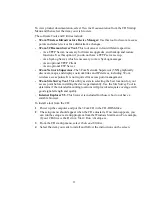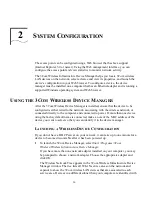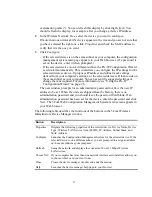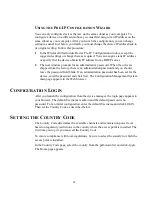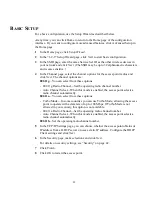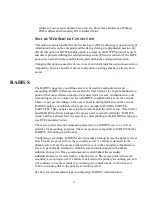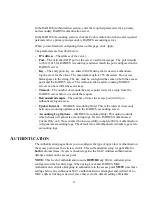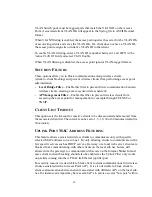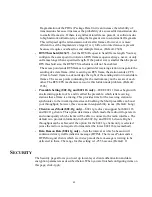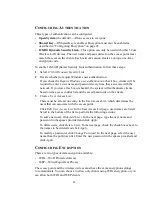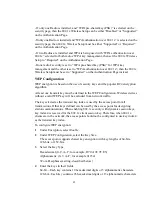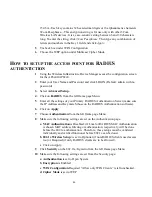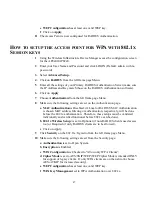
32
In the RADIUS Authentication section, enter the required parameters for a primary
and secondary RADIUS authentication server.
In the RADIUS Accounting section, click the
Enable
radio button, then enter required
parameters for a primary and secondary RADIUS accounting server.
When you are finished configuring items on this page, click
Apply.
The parameters are described below.
o
IP Address
—The address of the server.
o
Port
—The network (UDP) port of the server used for messages. The port defaults
to 1812 (1813 for RADIUS Accounting) and must match the port configured on the
RADIUS server.
o
Key
—The encryption key is a shared ASCII string that is used to authenticate
logon access for the client. The maximum length is 255 characters. Do not use
blank spaces in the string. The key must be configured the same on both the access
point and the RADIUS server. The Authentication and Accounting RADIUS
servers can have different secret keys.
o
Timeout
—The number of seconds the access point waits for a reply from the
RADIUS server before it resends the request.
o
Retransmit attempts
—The number of times the access point will try to
authenticate logon access.
o
Update Interval
— (RADIUS Accounting Only) This is the interval in seconds
between accounting updates sent to the RADIUS accounting server.
o
Accounting Log Options
— (RADIUS Accounting Only) This option controls
which clients will generate accounting logs. If set to RADIUS Authenticated
Clients Only, only those clients which successfully complete 802.1x Authentication
will generate accounting logs. The default is for all authenticated clients to generate
accounting logs.
A
UTHENTICATION
The Authentication page allows you to configure the type of upper-layer authentication
the access point uses for wireless clients. This authentication setup is applicable for
both
radio interfaces. Access is checked against the MAC Address authentication
database stored on the access point.
NOTE:
This level of authentication occurs
BEFORE
any 802.1x authentication
configured on the Security page. When using Local and RADIUS MAC
Authentication, clients attempting to authenticate to the access point
MUST
pass these
settings before any subsequent 802.1x authentication is attempted and verified. If no
MAC address filtering is desired, leave this set to the default setting of Disable.

